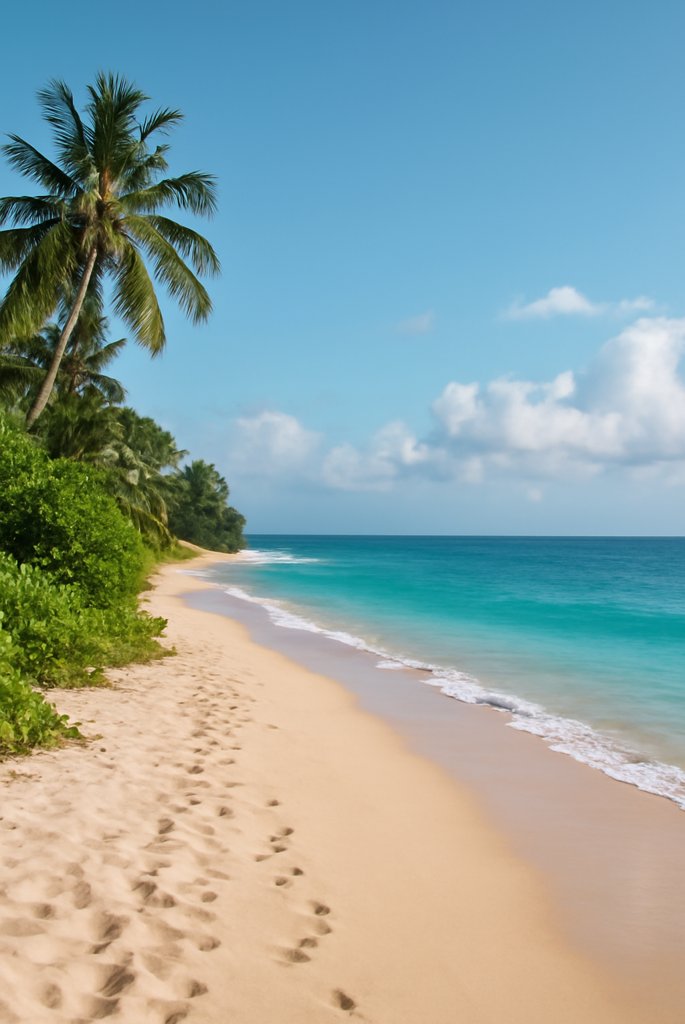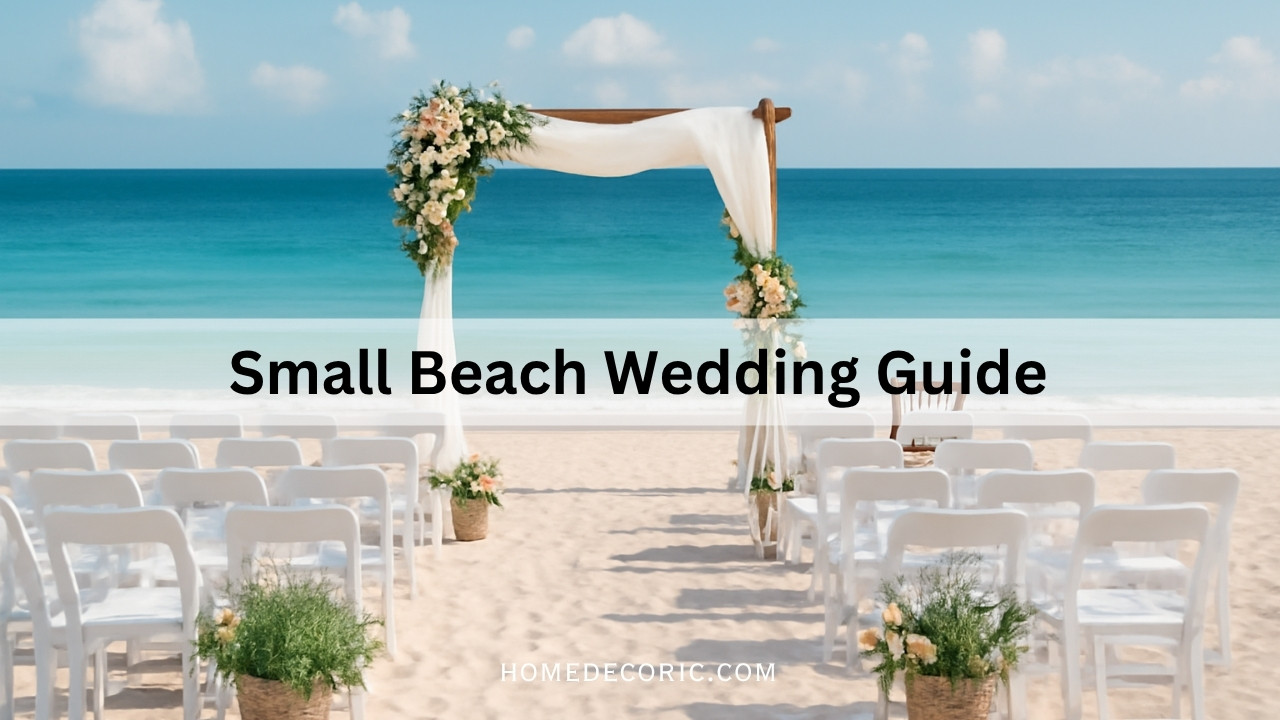Small Beach Wedding: How to Plan a Beach Wedding
Dreaming of a beach wedding with your toes in the sand and the ocean breeze in your hair? Wondering how to pull off a stunning small beach wedding that’s intimate, beautiful, and stress-free? Don’t worry, though; I’ve got you covered. Whether you envision a relaxed, intimate ceremony with close friends or a romantic getaway-style wedding, here’s your ultimate guide to planning a stress-free beach wedding.
Why Choose a Small Beach Weddings?
Before we get into the nitty-gritty of planning, let’s discuss why a small beach wedding might fit you. Beach weddings have this inherent charm and simple, natural beauty that makes for an unforgettable experience. And when you keep it small, it’s even better.
The Perks of Keeping it Small:
- Intimacy: With fewer guests, you can share a more personal, meaningful experience with the people who matter most. No one is just a plus-one here.
- Budget-friendly: A smaller guest list often means lower costs, from catering to rentals. Plus, beach weddings are naturally low-key when it comes to decoration.
- Less Stress: Fewer moving parts mean less to worry about. You can focus on what matters by saying “I do” with your soulmate and the waves as your backdrop.
- Location, Location, Location: You’re in a stunning spot. There is no need for fancy decor; nature takes care of that.
Sounds dreamy. Let’s get into how actually to make this happen.

Step 1: Choose the Perfect Beach
Okay, let’s talk location. Not every beach is created equal, and some are better suited for weddings than others. Your choice will depend on a few factors: vibe, accessibility, permits, and the weather.
Consider These Factors When Picking Your Beach:
- Privacy: Is this beach often crowded, or do you have the option to secure a more private spot? Privacy matters, especially for such an intimate event.
- Access: Is the beach easy for guests to get to? Make sure there are parking spaces, restrooms, and a little shade for older guests or those not used to the sun.
- Permits: Many beaches require permits for events like weddings. Please don’t skip this step; it could cost you a fine (and a ton of stress). Check local regulations for the correct paperwork.
- Weather: While you can’t control the weather (unfortunately), you can plan for it. Ensure you know your chosen beach location’s seasonality and average weather conditions.
Pro Tip: Visit the location at the same time of day as your wedding to get a feel for the lighting and the vibe. This will also allow you to scope out the best spots for a ceremony.
Step 2: Set a Date and Time
Now that you’ve picked the perfect beach, it’s time to select the correct date. You’ve probably heard this a million times, but I’ll repeat it: weather matters.
Here’s How to Pick Your Date:
- Off-season is your friend. Avoid peak tourist seasons if you’re after fewer crowds. Consider getting married in the shoulder seasons, early spring or late fall.
- Time of day: The best time for a beach wedding is typically late morning or early evening. The light is softer, and it’s a more comfortable temperature-wise. Plus, you get a gorgeous sunset if you go for an evening ceremony!
- Tide schedule: Pay attention to the tides. Low tide gives you more beach space; high tide can be an adorable, natural backdrop. Plan accordingly.
Consider the Forecast:
The sun always shines on your wedding day in an ideal world, but nature can be unpredictable. So, always have a backup plan, ideally a nearby venue or a tent, just in case.
Step 3: Keep the Guest List Intimate
One key benefit of a small beach wedding is its simplicity. Keeping the guest list small helps your budget and creates an intimate, relaxed atmosphere.
Why Small is Better:
- Easier to manage: Less stress with RSVPs, seating arrangements, and catering.
- Focus on the Experience: You’ll have time to talk to each guest and enjoy the day instead of feeling like a stressed-out host.
- More meaningful: With only close family and friends, the ceremony is way more personal.
But remember, just because you’re going small doesn’t mean you can’t go big with style. Keeping the guest list manageable, 15 to 50 guests is usually the sweet spot for a beach wedding.
Step 4: Choose Your Beach Wedding Attire
Let’s be real: A beach wedding allows you to break away from traditional formalwear, but that doesn’t mean you should skimp on style.
For the Bride:
- Dress it down (but not too much): Opt for a lightweight, breathable fabric, such as lace, chiffon, or silk. The idea is to stay cool while looking fabulous.
- Footwear: Heels on the sand? Yeah, no. Go for flip-flops, sandals, or even bare feet. It’s a beach wedding.
- Accessories: A flower crown, a delicate veil, or even shell jewelry can add that beachy touch.
For the Groom:
- Keep it Casual: A lightweight linen suit or even a dressy button-up with khakis is perfect for a beach wedding. There is no need for a heavy tux.
- Footwear: Think loafers or even stylish sandals. Just ensure they’re comfortable (because you’ll be standing in the sand).
Step 5: Decor and Details
You don’t need to spend much on décor when your backdrop is breathtaking. Let the beach do most of the work, and use simple, natural touches to enhance the vibe.
Decor Tips for Your Beach Wedding:
- Tropical Flowers: Think palm fronds, orchids, and hibiscus flowers. Add them to your ceremony space and bouquets.
- Seashells & Driftwood: These natural beach elements make beautiful, rustic touches for your centerpieces or aisle markers.
- A Simple Arch or Canopy: If you want something to frame the ceremony, a light, wooden arch draped with fabric or greenery can add that wow factor.
- Candles and Lanterns: If you’re doing a sunset ceremony, candles or lanterns can create a warm, romantic atmosphere.
Music:
The sound of waves is terrific, but soft background music can help set the mood. Consider hiring a live musician or creating a playlist.
Step 6: Hire Vendors Who Understand the Beach Vibe
Beach weddings don’t follow the same rules as traditional weddings, so you’ll need flexible vendors with experience with beach events.
Who You Might Need:
- Photographer/Videographer: Make sure your photographer knows how to capture that natural, beachy vibe. Good lighting and angles are key, especially with a beach backdrop.
- Officiant: Many officiants specialize in destination and beach weddings, so look for someone who can keep things light, personal, and in sync with the beach atmosphere.
- Caterers/Florists: Not all caterers can pull off a beach wedding. Work with someone who understands handling logistics, like keeping food cool in the heat.
Step 7: Enjoy Your Special Day!
When the big day arrives, remember to enjoy the moment. You’ve worked hard to make it perfect, but at the end of the day, what matters is that you’re marrying the love of your life in the most stunning location.
A Few Final Tips:
- Stay hydrated: Sand, sun, and excitement can warm the day, so drink plenty of water!
- Get creative with photos: Take advantage of the beach scenery. Silhouette shots at sunset and walking barefoot in the sand will be memories you’ll cherish forever.
- Relax and savor: A beach wedding is about laid-back vibes, so don’t stress the small stuff. You’re on the beach.
Final Thoughts: Ready to Plan Your Beach Wedding?
A small beach wedding is the perfect way to say “I do” in a serene, beautiful setting with the people who matter most. Planning your beach wedding can be exciting and fulfilling, from choosing the right beach to selecting the perfect attire. So, take a deep breath, soak in the salty air, and get ready to say your vows in one of the most romantic locations on Earth.
Now, go ahead and start planning! Your beach wedding is waiting for you.







